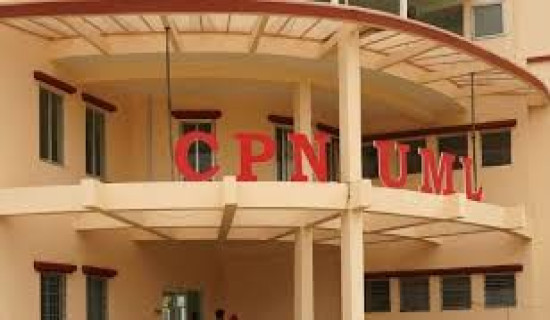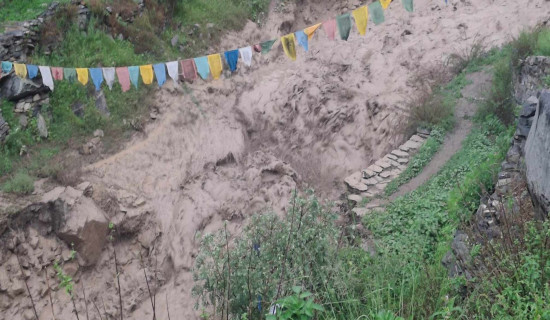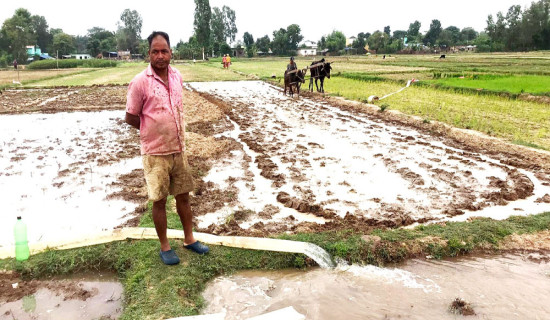- Thursday, 31 July 2025
Govt prepares for Bailey bridges and other alternatives during monsoon
By A Staff Reporter,Kathmandu, June 25: A monsoon-triggered flash flood in the Binayi River along the Narayangadh–Butwal section of the East-West Highway swept away a night bus on Thursday night.
Although no casualties were reported because of a prompt rescue of all passengers by the Armed Police Force Nepal, the incident has reignited concerns over the vulnerability of makeshift roads and diversions during this monsoon season.
The bus was trapped in the flood after a temporary road diversion over the Binayi River in Dumkibas, Nawalparasi (Bardaghat-Susta East), collapsed because of a sudden surge in water level in the river.
The diversion had been facilitating traffic ever since an iron bridge was rendered defunct nearly six months when a heavily loaded Indian trailer truck was crossing it.
Repeated inundation and wiping out of the makeshift diversions and a muddy uphill section in Daunne in recent days resulted in traffic gridlocks lasting over 30 hours and stretching for several kilometres.
Officials from the Ministry of Physical Infrastructure and Transport have claimed that a newly constructed permanent bridge near the site (Binayi River) is expected to come into operation within a week.
Bailey bridge not viable in Binayi River
The Ministry explained that a Bailey bridge is not feasible over the Binayi River due to its width of approximately 250 metres.
“We have over a dozen Bailey bridge sets ready for deployment, typically ranging from 40 to 50 meters in length,” said Senior Engineer and Chief of Bridge Division at the Department of Roads, Lalijan Khanal. “However, such structures are ineffective across wide rivers like the Binayi or Triveni.”
Generally, Bailey bridges are suitable for the rivers which are not wider than 50 metres, mostly in hills, where the central supports are not required. When intermediate supports become necessary, the practicality and stability of Bailey bridges diminish, Khanal said.
Currently, several Bailey bridges have been installed on other major routes like Larcha, Liping, and Khandal rivers on the Araniko Highway, Baguwa River on the Kanti Lokpath, and Khurkot on the BP Highway. Another Bailey bridge is nearing completion over the Chuwa River in Humla, as part of the Hilsa–Simikot road section, helping to connect the remote region to the national road network. Likewise, two Bailey bridges are being fixed along the alternative routes to Mechi Highway in Ilam.
Engineer Khanal emphasised that although Bailey bridges are meant for short-term use, Nepal often relies on them far beyond their intended lifespan. “They cannot support heavy cargo vehicles. Their utility lies in offering a temporary alternative during disasters, ideally for no more than one to two years with proper monitoring,” he added.
The Ministry has decentralised its Bailey bridge inventory across various regional offices for quicker deployment when needed during any disaster, for the immediate resumption of the blocked connectivity. The Nepali Army also maintains its own specialised units for emergency bridge installations.
Following the collapse of the old bridge at Dumkibas, contractors were instructed to expedite the construction of a new bridge before the monsoon began. Now nearly complete, the bridge must still undergo a mandatory 21-day observation period before it is officially brought into operation. However, discussions are underway to allow light vehicles to use it sooner, according to the Department of Roads.
“We’ve completed most of the construction and entered the observation phase, which is currently on its 18th day as of Monday,” said Bijay Jaishi, Director General of the Department. “We’re evaluating safe options to partially open it before the full period ends.”
DG Jaishi also raised concerns about the aging infrastructure along the East-West Highway. “Many of the bridges are decades old. Compounding the issue, overloaded vehicles, sometimes-- two to three times the designed weight capacity-- routinely use them, increasing the risk of sudden collapse.”
Recently, another bridge near Chormara in Nawalprarasi East suffered structural damage due to excessive load, just four months after the Dumkibas incident. The Department has since reinforced the bridge and brought it back into operation.
An evaluation by the Department of Roads revealed that over 50 per cent of bridges along the East-West Highway require complete reconstruction while others urgent repairs.

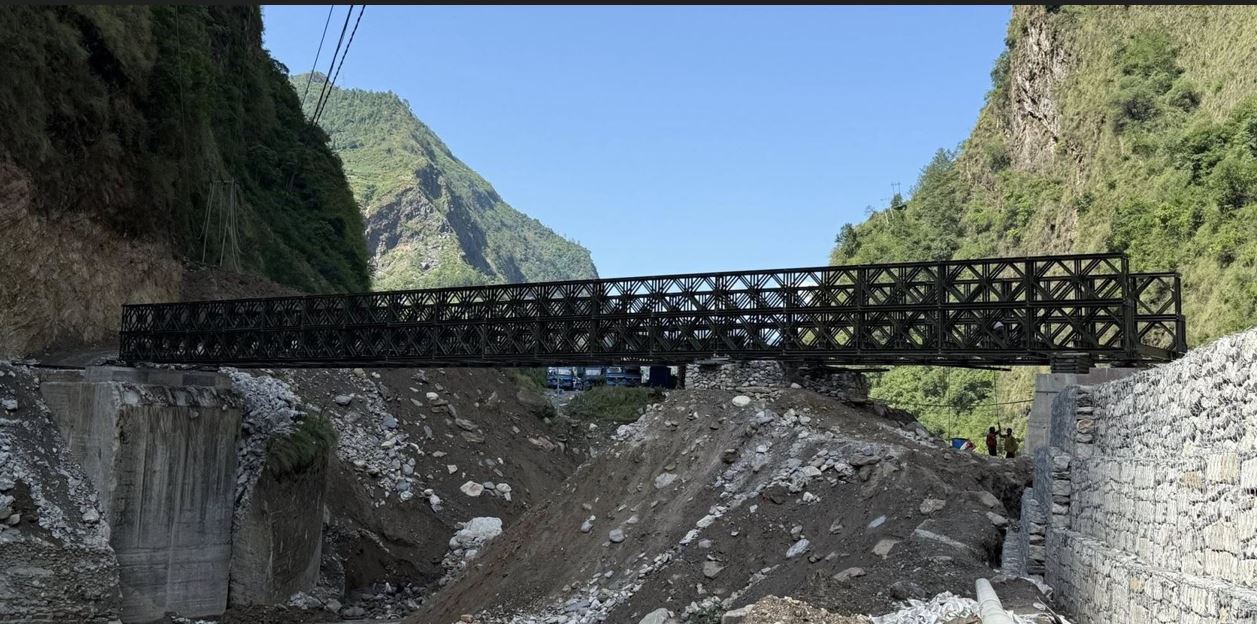

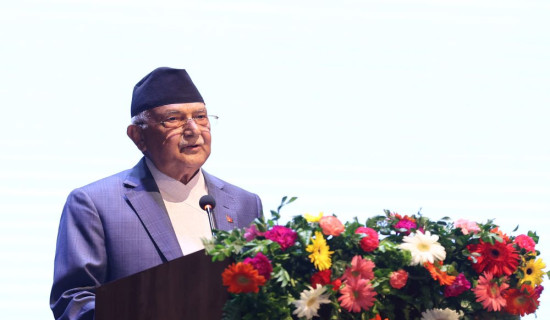
-square-thumb.jpg)
-square-thumb.jpg)

-square-thumb.jpg)
-square-thumb.jpg)
